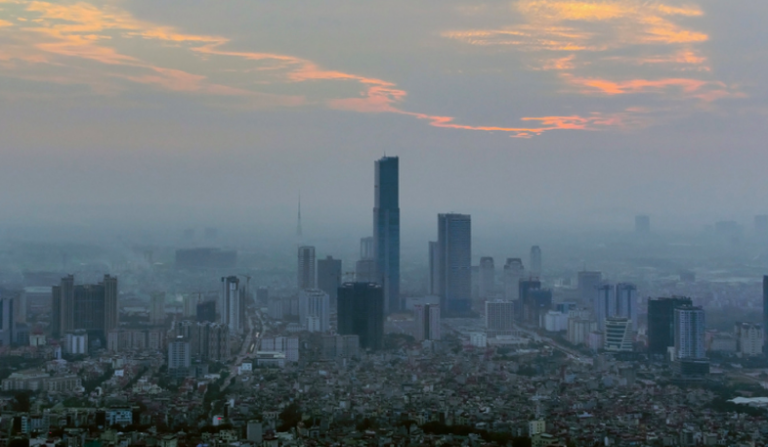The capital of Vietnam, Hanoi, has been covered by dense smog in recent weeks, making it the top city on the list of the most polluted cities in the world. Meanwhile, the government announced plans to promote the use of more electric vehicles to help mitigate the problem.
The levels of dangerous suspended particles, known as PM2.5, in Hanoi were measured at 266 micrograms per cubic meter early this morning—the highest reading on the list of the most polluted cities, according to AirVisual, which provides independent information on global air pollution through a mobile app.
This Southeast Asian country, a regional manufacturing hub with one of the fastest-growing economies in Asia, has reported severe air pollution in its major cities for years, especially in Hanoi.
The dense smog is primarily caused by traffic congestion, waste burning, and industrial activities.
“We, the elderly, experience this very clearly when we suffer from respiratory problems that cause shortness of breath,” says 64-year-old Lu Minh Duc. “The situation seems to have worsened recently.”
Younger people are also complaining.
“At first, I thought it was fog… but then I realized it was actually fine dust that limits my vision and makes me feel like it’s unhealthy to breathe,” says 21-year-old student Nguyen Nhi Hong.
Speaking at a meeting yesterday with the Ministry of Transport authorities, Deputy Prime Minister Tran Hong Ha called for speeding up the transition to electric vehicles as part of efforts to reduce pollution, according to state media.
So far, Hanoi has set a target to convert at least 50% of buses and 100% of taxis to electric vehicles by 2030.
“This is the state’s responsibility to its citizens, and specific actions should be taken in a timely manner,” Ha said, according to the Tien Phong newspaper.
The Ministries of Natural Resources, Environment, and Health did not immediately respond to Reuters’ request for comment.
Ask me anything
Explore related questions





